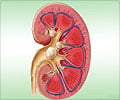When it comes to choosing correct catheter placement in children, a new Johns Hopkins Children's Center study shows the real-estate mantra also holds true.

A peripherally inserted central venous catheter, or PICC line, is a tube placed into a small blood vessel, usually in the arm, and threaded toward a major blood vessel near the lungs and heart to serve as a temporary portal for medications, nutrients or fluids. However, clinicians sometimes forego threading close to the heart and leave the PICC line in a peripheral vein in the arm or leg instead — a choice dictated by the ease and speed of placement or a child’s overall condition or anatomy.
The study findings, however, suggest that leaving the device in a non-central vein should only be done as last resort, the researchers say.
"Clinicians should carefully weigh the ease and speed of non-central vein placement against the higher complication risk that our study found goes with it," says senior investigator and pediatric infectious disease specialist Aaron Milstone, M.D., M.H.S.
Non-central, smaller veins, especially those in the arm, are narrower, thinner and more prone to injury than major vessels near the heart, the researchers say. Thus, a catheter can easily damage the protective coating on the walls of such veins and encourage the formation of blood clots that, in the worst-case scenario, can dislodge and travel to the lungs or heart, causing a pulmonary embolism or heart damage.
Conducted among more than 1,800 pediatric patients hospitalized at Johns Hopkins over six years, the study found that such non-centrally positioned catheters accounted for a mere 16 percent of the central lines, but for 44 percent of all complications that led to catheter removal.
Advertisement
Despite the higher risks seen with non-centrally position catheters, overall complications rates dropped significantly over the six-year study period, a trend that should get a further boost by emerging technologies, the investigators say.
Advertisement
Source-Eurekalert









